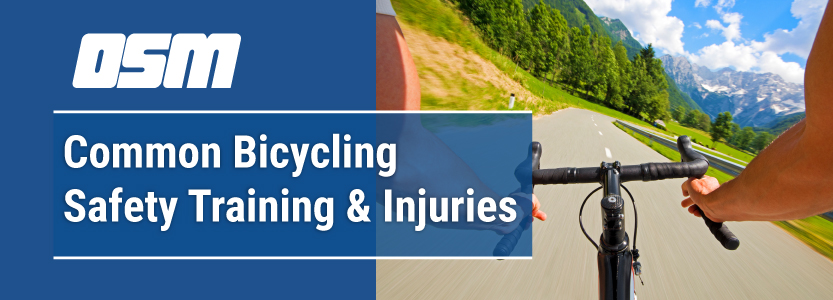Kids usually get their first taste of freedom when they learn to ride a bicycle. But ill-fitting equipment and traffic put riders at risk for falls, sprains, strains, and more serious cycling injuries.
Simple adjustments to their bikes and helmets, plus learning the rules of the road and other important bicycle safety tips, can help your young riders avoid injury.
Common Bicycling Injuries and Statistics
- 70 percent of children, ages 5 to 14, ride bikes regularly — making up 50 percent of all biking-related injuries.
- Almost half of the young people hospitalized from bike-related accidents suffer traumatic brain injuries.
- Estimates show that young riders use bicycle helmets just 15 to 25 percent of the time.
- Choosing not to wear a helmet also makes a rider 14 times more likely, than one with a helmet, to be involved in a fatal crash.
- Riders can reduce their risk of serious head injuries by 85 percent by wearing a bike helmet.
Bicycle injuries caused by overuse
If a bike isn’t the correct size — either too high or too low — cyclists can suffer repetitive or overuse injuries in the:
Common bicycling overuse injuries include tendonitis of the knee and strains to the calf muscles.
Preventing Bicycling Injuries
A good-fitting helmet
In order to prevent head injuries, a helmet must fit properly and follow the eyes, ears, and mouth rule:
- Eyes
- Position the helmet on your child’s head, and when the child looks up, he or she should see the bottom rim of the helmet.
- The rim should be one to two finger-widths above the eyebrows.
- Ears
- Make sure that the straps, when buckled, form a “V” under the ears.
- The straps should be snug but comfortable.
- Mouth
- Have your young riders open their mouths as wide as possible and be sure the buckle is flat against the skin.
- Can they feel the helmet “hugging” their heads? If not, tighten the straps.
The right bike
Proper fit doesn’t stop with the helmet. The bike must fit the rider, too.
One of the more common mistakes is buying a bike a child can “grow in to,” which may be economical, but it’s not safe. The young rider will have a tough time controlling a bike that’s too large.
There should be one to two inches of clearance between the rider’s crotch and the bicycle’s top tube when the rider is straddling the bike flat-footed. For a girl’s bike, imagine that there is a top tube extending horizontally from the front of the bike and measure from there.
Strong legs
In addition to having properly fitting equipment, all bikers can benefit from hip, thigh, and calf strengthening to prevent wear and tear on muscles, tendons, and ligaments.
Bicycling safety tips and rules
These rules will help you ensure the safety of your young bike rider. Always model and teach proper behavior. Learn the rules of the road and obey traffic laws.
- Ride on the right side of the road with traffic, not against it. Stay as far to the right as possible and use proper hand signals.
- Obey traffic signals, stopping at all stop signs and traffic lights.
- Stop and look left, right, and then left again before entering a street or crossing an intersection. Prior to turning left, look back and yield to traffic coming from behind.
- Don’t allow your child to ride in traffic until he or she displays good riding and traffic skills and solid judgment.
- Don’t allow your child to ride after dark, in fog, or in other low-visibility conditions. Those who must ride at dusk, dawn, or in the evening should have reflectors and lights on their bikes.
- Add reflective materials to clothes and accessories to make riders more visible to motorists.



